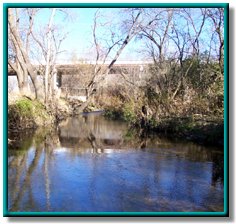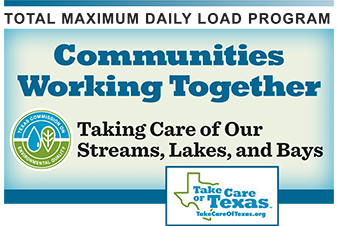Lower San Antonio River
Watershed Counties: DeWitt, Goliad, Karnes, Refugio, Victoria
Parameter: Bacteria
Basin: San Antonio River
Segment: 1901
On this page:
- Background and Goals
- Description of Watershed
- Get Involved
- Status
- Approved I-Plan
- Adopted TMDL
- Contact the TMDL Program
Background and Goals
In the Lower San Antonio River, Segment 1901, water quality testing found concentrations of bacteria that may pose a health risk for swimmers. Swimming and other forms of recreation in which people come into direct contact with the water are called “contact recreation” in the state’s standards for water quality.
The TMDL Program contracted with Texas A&M AgriLife Research in 2016 to develop an I-Plan with stakeholders. AgriLife Research held multiple public meetings in Goliad and Kenedy from November 2016 through August 2017 to form the coordinating committee and technical subcommittee that developed the I-Plan and to work on all aspects of the plan. The San Antonio River Authority continues to monitor water quality in the watershed. Additionally, watershed stakeholders have met annually since the I-Plan approval in 2018 to assess their progress.
Description of Watershed
The Lower San Antonio River is located near Falls City, in Karnes County. Land uses are predominantly agricultural and ranching. The watershed has unconsolidated mud and sand substrate, thick, organic soils, little topographic relief, and an abundance of shrub and grassland vegetation.
Get Involved
In all our projects, we seek opinions and information from stakeholders—people who represent government, permitted facilities, agriculture, business, environmental, and community and private interests in the watershed. All stakeholders are welcome to get involved in implementing the strategy to improve water quality. Public meetings about the project are open to everyone. Find out more about what it means to participate in TMDL projects.
Approved I-Plan
On Aug. 8, 2018, the commission approved the I-Plan for the river. Stakeholders in the region developed the I-Plan.
- I-Plan for Five TMDLs for Bacteria in the Lower San Antonio River Watershed
- Response to Public Comment on the I-Plan
Status
TCEQ coordinates follow-up meetings in cooperation with SARA to give stakeholders the opportunity to report on progress and discuss changes in the watershed.
- FY 22 & 23 Status
- December 2021 Meeting, FY 21 Status
- December 2020 Meeting, FY 20 Status
- February 2020 Meeting, FY19 Status
Adopted TMDL
The commission adopted the TMDL on Aug. 20, 2008.
-
One TMDL for Bacteria in the Lower San Antonio River
Segment: 1901; Assessment Units: 1901_01, 1901_02, 1901_03, 1901_04, 1901_05 - Response to Public Comment on the TMDL
The EPA approved the TMDL on Oct. 20, 2008, at which time it became part of the state’s Water Quality Management Plan.
Revisions to TMDLs
From time to time, it is necessary to revise TMDLs to account for changing conditions in the watershed. Revisions to the load allocations in TMDLs are made via the state’s Water Quality Management Plan (WQMP), which is updated quarterly.
The WQMP provides projected effluent limits for use in planning and permitting activities under the Texas Pollutant Discharge Elimination System (TPDES). The TCEQ reviews all applications for new and amended permits for conformance with applicable portions of the WQMP, including adopted TMDLs.
Updates
Updates are made to account for changing conditions in the watershed, such as new or revised wasteload allocations, permits that have been canceled or have expired, or changed facility names. Updates use the same units of measure as the original TMDL.
- October 2018, Appendix II, pages 13-14
- July 2013, Appendix I, page 10
- January 2012, Appendix IV, page 17
- April 2009, page 20
WQMP updates may be viewed in person at the TCEQ Library, Building A, 12100 Park 35 Circle, Austin, Texas. Electronic versions of updates published from 2014 through the present are available on the Texas State Library and Archives Commission website .
For WQMP updates prior to 2014, use the TRAIL Search the TCEQ engine as outlined below. The main search box on the page will only conduct a simple search with no exclusionary parameters and should not be used.
- First, limit your search to TCEQ only. Do this via the advanced search feature on the left of the page. To limit a search to TCEQ content, enter “www.tceq.texas.gov” or “www.tceq.state.tx.us” into the “From the Host” search box.
- Refine your search to narrow down results. The other search boxes on the left of the page allow for search terms to be included, excluded, or used in an exact phrase search. Date ranges can be used as well.
For More Information
Please e-mail tmdl@tceq.texas.gov, and mention the Lower San Antonio River Bacteria TMDL in the subject line. Or call us at 512-239-6682.





 Back to top
Back to top